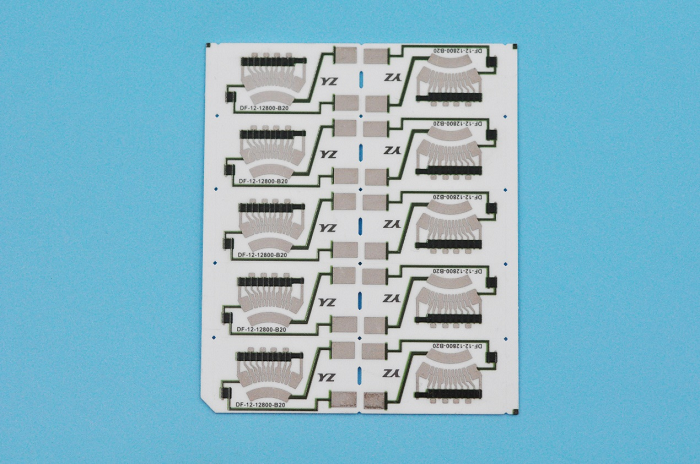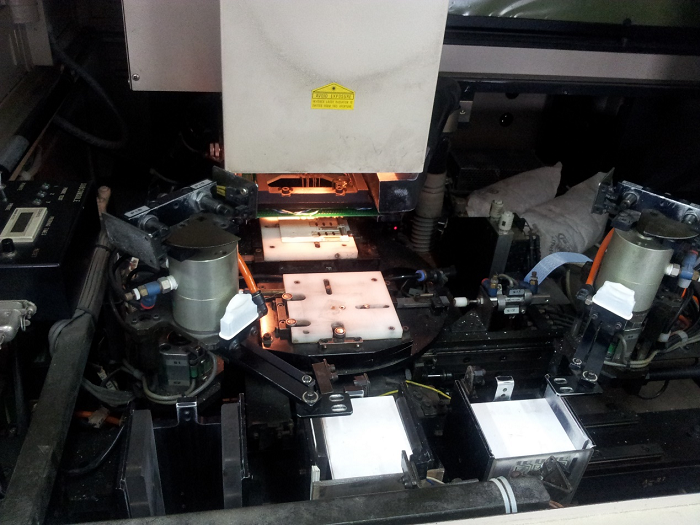Why ceramic PCB is more excellent than FR4 PCB?
Introduction:
In many kinds of PCBs, ceramic PCBs are getting more and more attention. Ceramic PCB is known for its excellent performance in high temperatures and high thermal conductivity. In the face of the upgrading technical requirements and application scene, we have to compare different kinds of PCB to get a better choice of PCB solutions. Therefore, we will discuss the advantages and disadvantages between ceramic PCB and FR4 PCB. From an overall analysis, we aim to help the industry with more PCB solution support, prompting more companies to take a solid step on technical innovation and product performance.
In this era of rapid development, we look forward to sharing these insights to help our customers and cooperative partners create bigger value and drive the progress of the entire electronics industry.
Advantages of ceramic PCB
High-Temperature Performance:
In the working of electronic devices, high-temperature environments are often a challenge that needs to be faced and overcome. Ceramic PCBs stand out as a preferred solution due to their outstanding high-temperature performance.
- Stability in High-Temperature Environments:
The substrates of ceramic PCB, a material known for its excellent high-temperature resistance. The thermal stability of ceramics enables Ceramic PCBs to maintain circuit stability and performance under extreme temperature conditions. Compared to regular PCBs, Ceramic PCBs are less susceptible to the effects of high-temperature environments, providing better resilience against challenges posed by elevated temperatures.
- Applications of Ceramic PCB in High-Temperature Conditions:
The high-temperature performance of Ceramic PCBs allows for a wide range of applications in various high-temperature scenarios, including:
Automotive Electronic Systems:
Ceramic PCBs can be used in components such as Engine Control Units (ECUs) in the automotive industry, ensuring the reliability of electronic components in high-temperature engine compartments.

Aerospace Industry:
In aerospace devices, especially in equipment like satellites that work for long periods in space, Ceramic PCBs ensure stable working under extremely high-temperature conditions.
Industrial High-Temperature Furnace Control Systems:
In manufacturing, some high-temperature furnace control systems are sensitive to temperature changes. The application of Ceramic PCBs ensures the long-term stable working of circuits in these systems.
Thermal Conductivity:
In electronic device design, thermal management is crucial. Ceramic PCBs lead ahead in thermal management due to their excellent thermal conductivity.
- Enhancing Heat Dissipation with Superior Thermal Conductivity:
Ceramic PCB substrates generally have high thermal conductivity. Compared to the base materials used in regular PCBs, Ceramic PCB substrates effectively conduct heat. Therefore, in high-power electronic devices, Ceramic PCBs can transfer generated heat to heat-dissipating components more quickly and efficiently, improving overall heat dissipation.
Additionally, the superior thermal conductivity of Ceramic PCBs allows for more even heat distribution and transfer, preventing the accumulation of hotspots and reducing the risk of thermal stress. This exceptional thermal conductivity makes Ceramic PCBs perform exceptionally well in high-power density applications.
- Thermal Management Advantages of Ceramic PCBs in Electronic Devices:
Electronic devices with high-power components often generate elevated temperatures. Effective thermal management is crucial for extending device life and improving performance. Ceramic PCBs demonstrate significant advantages in thermal management in electronic devices, particularly in the following aspects:
Temperature Reduction of Components: Due to the superior thermal conductivity of Ceramic PCBs, they can rapidly transfer heat to heat sinks, reducing the working temperature of electronic components and enhancing their reliability.
Improved System Performance: Effective thermal management by Ceramic PCBs helps maintain electronic devices within a stable temperature range, preventing performance degradation or failures due to overheating.
Extended Device Lifespan: Reducing thermal stress helps slow down the aging process of components, thus extending the overall lifespan of electronic devices.
Mechanical Strength:
Mechanical strength is crucial for the durability and reliability of printed circuit boards (PCBs). Ceramic PCBs stand out with their high mechanical strength, providing robust support for electronic devices.
Significance of High Mechanical Strength for Durability:
Ceramic PCBs employ ceramic substrates, a material known for its excellent mechanical strength. During the manufacturing and use of electronic devices, mechanical stress, and vibrations can have a significant impact on PCBs. The high mechanical strength of Ceramic PCBs enables them to resist external shocks and stress better, improving the overall durability of the system.
Importance of High Mechanical Strength in Challenging Environments:
In harsh industrial environments or equipment requiring frequent maintenance, the high mechanical strength of Ceramic PCBs becomes particularly important. It effectively reduces the risk of damage caused by physical impacts and vibrations.
Comparison of Mechanical Performance with Regular PCBs:
Compared to regular PCBs, Ceramic PCBs exhibit clear advantages in mechanical performance. Regular PCBs typically use resin with glass fiber reinforcement as the base material, which performs well in general applications but may have limitations under extreme conditions.
Durability: The high mechanical strength of Ceramic PCBs allows them to maintain better performance over extended use, slowing down the aging process.
By comparing mechanical performance, we gain a comprehensive understanding of the superior mechanical strength of Ceramic PCBs, providing users with a more reliable electronic device solution.
Insulation Performance:
Insulation performance is a crucial characteristic of printed circuit boards (PCBs) in electronic devices, particularly in high-voltage environments. Ceramic PCBs excel in high-voltage environments due to their outstanding insulation performance.
Different from some traditional base materials, the insulation performance of Ceramic PCBs remains excellent under high temperature and humidity conditions. This stable insulation performance ensures the long-term stable working of electronic devices, especially in some extreme industrial environments.
Analysis of Advantages in High-Voltage Environments:
In specific application scenarios, electronic devices may need to operate in high-voltage environments, such as power systems, high-voltage power amplifiers, etc. Ceramic PCBs have clear advantages in high-voltage environments, primarily reflected in the following aspects:
Prevention of Breakdown and Leakage: Ceramic PCBs effectively prevent circuit breakdown and leakage between components, ensuring the stable working of electronic devices under high-voltage conditions.
Enhanced Device Safety: By ensuring the excellent insulation performance of the circuit board, Ceramic PCBs can reduce the risk of electrical faults in devices working in high-voltage environments, improving device safety.
Prolonged Device Lifespan: Stable insulation performance helps slow down the aging of insulation materials in electronic devices, thus extending the overall system lifespan.
Drawbacks of Ceramic PCBs:
Cost Factor:
Ceramic PCBs, being an advanced technology, exhibit superior performance but come with relatively higher manufacturing costs, which is an important factor to consider and balance.
Factors contributing to the cost of Ceramic PCBs include the higher cost of materials and the complex manufacturing processes requiring specialized equipment and techniques. In comparison to traditional regular PCBs, the manufacturing of Ceramic PCBs involves more advanced technology and stricter production requirements, leading to a significant increase in manufacturing costs.
When choosing a PCB, businesses often need to strike a balance between cost and performance. While Ceramic PCBs have significant advantages in high-temperature performance, thermal conductivity, mechanical strength, and insulation performance, the high manufacturing cost may be a limiting factor in some application scenarios.
Manufacturing Complexity
Compared with traditional ordinary PCBs, ceramic PCBs are more difficult to manufacture. This manufacturing complexity may pose challenges to some companies and requires careful consideration when choosing. However, the manufacturing process of ordinary PCBs is relatively mature.
Control of high-temperature processes: The manufacturing of ceramic PCBs requires high-temperature sintering and other steps, and these steps place higher requirements on process control and equipment stability. This also makes the construction and maintenance costs of the production line relatively high.

Impact on production efficiency: Manufacturing complexity may lead to relatively low production efficiency, increasing production cycle time and production costs. This may put some pressure on some projects that have high requirements on delivery time and cost.
By understanding the complexities of ceramic PCB manufacturing, companies can more fully assess their challenges in the production process to make informed decisions when selecting PCB types.
Advantages of ordinary PCB
Relatively low cost
Ordinary PCB has obvious manufacturing cost advantages over ceramic PCB, especially in mass production scenarios, this advantage is even more prominent.
Ordinary PCBs usually use glass fiber-reinforced resin as the base material. These materials are relatively common and mature in manufacturing, and their costs are relatively low in comparison. Compared with ceramic PCBs, the purchase cost of these substrates is lower, the manufacturing process of ordinary PCBs is relatively simple, and the equipment used is more popular.
In mass production, ordinary PCB shows obvious economic advantages:
Relatively low raw material costs: The prices of raw materials such as base materials and copper-clad films used in ordinary PCBs are relatively low, suitable for mass production, and reduce the manufacturing cost of each PCB.
The manufacturing process is relatively simple: Compared with the manufacturing process of ceramic PCB, the production process of ordinary PCB is simpler and more mature. This reduces the construction and operating costs of the production line and improves production efficiency.
Suitable for large-volume orders: Due to the relatively low cost, ordinary PCB is more suitable for mass production and is suitable for large-volume orders to provide customers with more competitive prices.
Diversity
Ordinary PCBs show diversity in design and application and are suitable for a variety of industries and application fields.
The design and application of ordinary PCBs are highly diverse, mainly reflected in the following aspects:
Diversity in size and number of layers: Ordinary PCBs can be designed with different sizes and number of layers according to specific needs. From small embedded devices to large communication base stations, suitable solutions can be found.
Flexibility of circuit layout: Designers can perform flexible circuit layout on the circuit board according to specific application requirements to meet different functional and performance needs. This makes ordinary PCBs suitable for various application scenarios, including Mobile phones, TVs, audio, and other consumer electronics products
Conclusion:
Ceramic PCBs offer unparalleled performance in high-temperature environments, thermal conductivity, mechanical strength, and insulation performance. These advantages make them ideal for applications in industries such as aerospace, automotive, and high-power electronics where reliability and performance under extreme conditions are paramount.
While the cost of manufacturing Ceramic PCBs is higher compared to regular PCBs, their unique features make them a valuable choice for specific applications where the benefits outweigh the cost considerations. The decision to use Ceramic PCBs should be based on a thorough evaluation of the specific requirements of the application, industry standards, and the budget constraints of the project. Ultimately, Ceramic PCBs represent a cutting-edge solution for demanding electronic applications, providing enhanced reliability and performance in challenging environments.






















































 HOME
HOME







